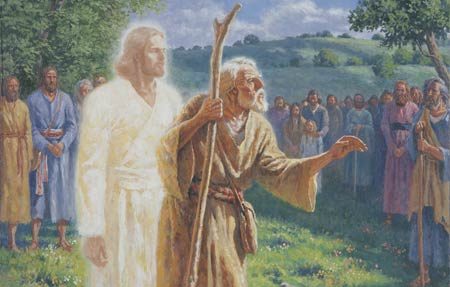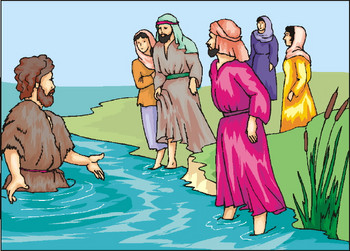Question
Gramps,
I have a question about baptizing for the dead. I believe the LDS church is the only one performing this. I was wondering if you have any scripture to support that? You have 3 extra scriptures, so I think that you really should be able to find at least one verse saying that this is the right thing to do. I know about 1 Cor 15:29 but for me and all non-Mormon people I know it means something else than to you. In my opinion it’s a letter to Corinthians and it means that “they” (unbelievers, non-Christians)were saying that there won’t be any resurrection and there’s no life after death of the body and Paul said that they’re being a hypocrite because they are baptizing one another for the dead and they’ve said that when we died there is nothing after that. I think that that’s it. He never said that ‘YOU/WE baptized’ or you should do it. Nothing like this is mentioned in the Bible or Book of Mormon. I haven’t read Doctrine and Covenants yet, but think there nothing in there either.
Anonymous
Answer
Anonymous,
In August of 1840, the Prophet Joseph Smith announced to the saints that they could be baptized in behalf of their dead family members. Members of the Church were so eager to perform the ordinance that they would practice the baptisms in the Mississippi River. As they carried on, more was revealed about the ordinance and was canonized as scripture in our Doctrine and Covenants (D&C).
 D&C 124:29-33 (19 January 1841) – Baptisms for the dead should really be performed in a temple, but since they didn’t have one yet they could continue to baptize in the river.
D&C 124:29-33 (19 January 1841) – Baptisms for the dead should really be performed in a temple, but since they didn’t have one yet they could continue to baptize in the river.
D&C 127:5-7 (1 September 1842) – When baptizing for the dead, there needs to be witnesses and the event should be recorded. The underlying doctrine being that what is recorded (bound) on earth is recorded (bound) in heaven (see Matt 16:19).
D&C 128 (6 September 1842) – This is a letter from Joseph Smith explaining many of the underlying doctrines behind baptism for the dead. He explains that the books spoken of in Revelation 20:12 are the books being written as the ordinance is performed, recording the baptism. Additionally, the ordinance of baptism carries a lot of symbolism tying the ordinance with the dead (crucifying the old man of sin, burial, etc (Romans 6:3-7)), so it’s not really surprising to find an additional tie-in with baptizing on behalf of the dead. “Consequently, [in our temples] the baptismal font was instituted as a similitude of the grave, and was commanded to be in a place underneath where the living are wont to assemble” (vs 13). Joseph quotes the same verse you referenced (1 Corinthians 15:29) and ties it in with Malachi 4:5-6,
Behold, I will send you Elijah the prophet before the coming of the great and dreadful day of the Lord:
And he shall turn the heart of the fathers to the children, and the heart of the children to their fathers, lest I come and smite the earth with a curse.
This work for the dead is performed because Elijah did indeed come. He brought with him the authority to perform the ordinances (the sealing power) and have them ratified in heaven. He gave to Joseph Smith the keys associated with this work. Since then, the keys have been passed from Prophet to Prophet until today; and since then people’s hearts have turned toward their ancestors as testified by thriving genealogical societies.
Some additional Latter-day Saint scripture detailing related doctrines can be found in
D&C 110:13-16 (3 April 1836) – This is an account of Elijah giving Joseph the sealing power.
D&C 138 (3 October 1918) – Joseph F. Smith (6th Prophet of the church and nephew of the other Joseph Smith) tells about the vision he had of the spirit world (the place where everyone goes to await the resurrection). He relates the missionary efforts that were organized there to prepare the dead to receive their ordinances necessary for salvation. Interestingly enough, this vision came as a result of his musings on 1 Peter 3:18-20 and 1 Peter 4:6.
Gramps







